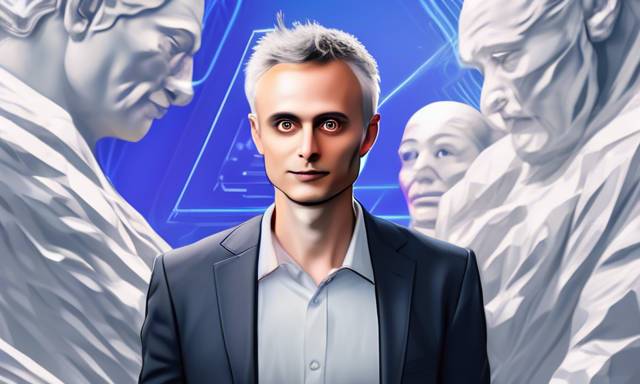Exploring Ethereum’s Future with Surge 🚀
In a recent update, Vitalik Buterin, the co-founder of Ethereum, introduced a new development initiative known as Surge. This proposal aims to enhance Layer-2 (L2) solutions, facilitating higher transaction throughput while lowering associated costs. Such advancements are vital for the long-term vision of Ethereum’s ecosystem and its overarching evolution.
The Surge: A New Direction for Ethereum’s L2 Solutions
Layer-2 technologies serve a crucial role within the Ethereum ecosystem by enabling the processing of a significantly greater number of transactions at reduced fees compared to Ethereum’s base layer. Despite the availability of several popular L2 solutions, the ambitious target of achieving up to 100,000 transactions per second (TPS) remains an ongoing challenge.
Vitalik emphasizes that this ambitious TPS goal should guide the future development of Ethereum, asserting that the entire ecosystem should function as an interconnected unit rather than as isolated chains. Many existing L2 solutions operate on their own blockchains but utilize Ethereum’s foundational security.
Additionally, Buterin highlighted the necessity of interoperability among various L2s, ensuring seamless interaction that contributes to an efficient network.
Balancing Ethereum and L2: New Challenges Ahead ⚖️
Recent updates, such as the Dencun rollout in March, provided a valuable boost by significantly reducing transaction costs on L2 platforms. However, Buterin warns that this path presents its own set of obstacles.
A current area of concern is that excessive reliance on extractive L2s might siphon users and revenue away from the main Ethereum layer. This shift could potentially heighten security vulnerabilities and impact the value of Ether (ETH).
Buterin proposes that the roadmap for Ethereum’s growth should integrate new approaches. These include strategies such as data availability sampling and improved data compression, which can bolster the safety and reliability of L2s while enhancing user experience across the network.
Achieving a firm balance is essential; while Ethereum requires dependable rollups, the expansion of these solutions should mirror the advancements seen in the main Ethereum network.
Observations on ETH Pricing 💰
Throughout this year, ETH prices peaked at around $4,100 in March but faced a steep decline shortly after, plummeting below $2,900 by early May—a staggering drop of 30% within just two months. This downward trend continued post-launch of ETH spot ETFs on U.S. exchanges, with prices dipping to approximately $2,200 in early September.
As of now, ETH’s value hovers near $2,600, which is notably less than its historical maximum price of $4,900 seen in 2021. In contrast, Bitcoin recently set a new high at the outset of this year and is now just a short distance from that peak.
It’s important to recognize that Ethereum has exhibited a tendency to outperform Bitcoin during bullish market phases while lagging behind during bearish periods. For instance, ETH saw an impressive 160% increase during the bull run from October 2023 to March 2024, while BTC recorded an even higher growth rate of 170% in the same timeframe.
Should a significant bull run occur following the upcoming halving, it may not be surprising to see ETH outshine BTC, at least temporarily.
Shared Aspirations for Layer-1 and Layer-2 🌐
In Vitalik’s view, the continued success of Ethereum necessitates an expansion of the layer-1 framework. He warned that if L2 solutions achieve substantial scalability while L1 remains limited, this could lead to potential risks.
The suggested approach involves making certain functionalities and computations more efficient and cost-effective without compromising the underlying principles of decentralization.
The ultimate vision is to unify perceptions of L1 and L2s as a cohesive Ethereum ecosystem, while also simplifying communications between various L2 solutions in the back-end. This change would allow tokens to be transferred seamlessly between different chains without the need for manual bridging or conversion for transaction costs.
This comprehensive perspective marks a shift from Buterin’s earlier focus predominantly on rollups and their complete integration. Nonetheless, achieving these ambitious goals will require further enhancements to the layer-1 structure.





 By
By

 By
By
 By
By
 By
By